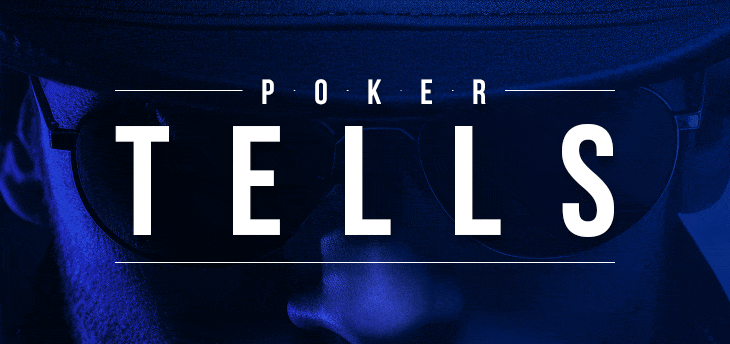Poker, a game that transcends borders, invites players from diverse cultural backgrounds to engage in a battle of wits and strategy. While the cards may speak a universal language, the tells – those subtle, often subconscious cues that betray a player’s thoughts or hand – can vary significantly across cultures. This article explores the fascinating world of cultural variations in poker tells and offers insights into training yourself to become adept at identifying these nuanced signals.
Cultural Diversity in Poker Tells
Understanding the cultural context of poker tells is crucial, especially in international games or online platforms where players from different parts of the world converge. A gesture, expression, or behavior that signifies confidence or nervousness in one culture might have an entirely different connotation in another.
For instance, in some Eastern cultures, maintaining direct eye contact might be seen as confrontational or disrespectful, whereas in Western cultures, it’s often interpreted as a sign of confidence. Similarly, the interpretation of body language, such as posture or hand movements, can vary. A player’s cultural background can significantly influence how they express themselves at the poker table.

The Art of Deciphering Cultural Tells
Mastering the art of reading poker tells in a multicultural setting requires keen observation and an understanding of cultural nuances. It’s important to approach each game with an open mind and avoid making assumptions based on your cultural norms. Paying attention to patterns in a player’s behavior, considering their cultural background, and observing how they interact with players from different cultures can provide valuable insights.
Bridging the Cultural Divide
To bridge the cultural divide in poker tells, players can engage in cross-cultural studies or interact with players from various backgrounds. Participating in international tournaments or online games with a global player base can offer practical experience. Additionally, reading books or watching videos on cultural behaviors and communication styles can be immensely helpful.
Training Yourself to Identify Poker Tells
Identifying poker tells is an art form, requiring a blend of sharp observation, psychological insight, and continuous practice. This section offers a structured approach to refining your tell-reading skills, taking into account both personal and cultural nuances.
The Importance of Observational Skills
Developing your observational skills is a crucial aspect of becoming proficient in reading poker tells. It’s a process that requires focused attention and systematic practice. Initially, concentrate on one specific area of behavior – such as facial expressions or hand movements. Facial expressions can be particularly telling; a fleeting look of surprise, a smirk, or even a furrowed brow can provide significant insight into a player’s mindset or hand. Similarly, hand movements – how a player handles their chips or cards – can indicate their level of confidence or anxiety.
As you become more comfortable interpreting these signals, gradually broaden your scope to include other aspects of behavior. This could include noticing a player’s posture, their breathing patterns, or even the way they glance at their opponents. Each of these elements can offer a piece of the puzzle in understanding an opponent’s strategy and hand strength.
Additionally, it’s important to observe a player over time to establish a baseline of their normal behavior. This baseline acts as a reference point, making it easier to spot deviations that could signify a significant hand or a bluff. For instance, a player who typically plays in a relaxed manner but suddenly becomes tense or starts to fidget might be holding a strong hand or bluffing.
Recording and Reviewing Gameplay
One of the most effective ways to improve your tell-reading skills is to record and review your gameplay, especially in online poker games. This allows you to observe your own behaviors and identify any tells you may be unconsciously revealing. Additionally, watching recordings of games with players from diverse backgrounds can help you understand how cultural nuances manifest in their poker tells.

Practice and Patience
Like any skill, mastering poker tells requires practice and patience. Engage in regular practice sessions, either in real-life games or online. Remember, the goal is not only to spot tells but also to understand them in the context of the game and the player’s cultural background.
Balancing Tells with Strategy
While tells can provide valuable insights, they should be used in conjunction with solid poker strategy. Overreliance on tells can lead to misinterpretation and costly mistakes. Maintain a balance between psychological insight and strategic gameplay.
Advanced Techniques for Reading Tells
As you progress, you can explore advanced techniques for reading tells. These might include understanding the implications of timing in online poker, deciphering speech patterns, and analyzing betting behavior. Remember, the more subtle and nuanced your observations, the more effective your tell-reading will become.
A Continuous Journey of Learning
Navigating the world of poker tells, especially in the context of cultural diversity, is a continuous journey of learning and adaptation. By understanding the psychological underpinnings of tells, honing observational skills, embracing cultural differences, and integrating this knowledge with poker strategy, players can significantly enhance their game.
Poker is not just about the cards you’re dealt; it’s about understanding the people you play with. Whether you’re sitting across the table from someone in a local casino or facing opponents from around the world in an online tournament, your ability to read and interpret tells can be a game-changer. So, embark on this fascinating journey of discovery, where every game is an opportunity to learn, adapt, and outsmart

